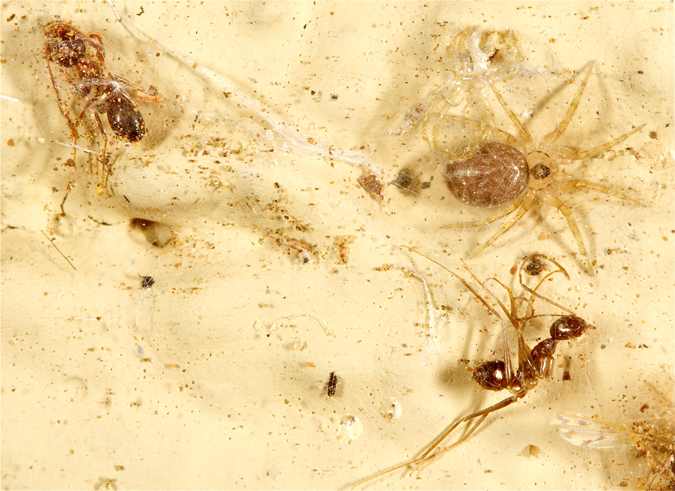ExFmem, please do the KTP Pheidole, you are very good at it
The Kruger Pheidole second photo does not help much either.
Moderator: Klipspringer
We make this a minor of P. crassinoda - it's the only one with minors having red dark legs and punctures on all middle segments and not very hairy all over
She is hereExFmem wrote: ↑Mon Feb 15, 2021 9:46 pm
I also found some spiders while searching for the ants, so will post them later after I get the beetle entry re-done. Do you want to do the P. tenuinodis ant, or shall I? You have so much better knowledge than I do, but are WAY busier with all that's on your plate. I can certainly cut and paste all your great references
Added the photos, very cool observationExFmem wrote: ↑Tue Feb 16, 2021 1:06 am I deleted the erroneous Darkling Beetle entry (it now says "deleted" )and entered the new one. Really didn't have too much info, so feel free to add to it.

****************************
Here are some pics I found from Kruger 2017 of the Anteater spider Oecobius navus showing more of its biology :
Biology
Makes a small web, which has a diameter of only about 3 cm, and is often made against an edge of something, e.g. from the floor against a baseboard, but it can also be found on walls over small recesses. It lives this tent-like web but does not use the web for prey capture. Instead, it only uses bands of silk to restrain prey.
Movement is rather fast and in a very convoluted pathway. Often feed on ants. If it runs into an ant, the spider switches from convoluted running to running tight circles around their prey, tying it down with silk as it encircles it.
Oecobius navus is considered a facultative myrmecophage (ant-eater).
(Don’t need all of them, but can add as you see fit.)
(Under web)
(With ant prey)

Ocymyrmex fortior (the O. weitzeckeri arnoldi listed is considered a synonym)
ExFmem wrote: ↑Thu Feb 18, 2021 6:14 pm P. crassinoda done, but not too much info.
You asked if it scavenged the leg, but it only caught my eye as it was struggling to hoist it over the twig, so I don't know.
Also, I found an article about group co-operative behavior of P. crassinoda that I would like to have included, but I don't have the credentials to access the entire paper.
“Workers of Pheidole crassinoda Em. regularly work in groups to transport prey…A comparison of the behavior of ants moving prey singly and in groups led to the conclusion that, although the behavior of ants in a group was in many ways the same as that of single ants, group transport in this species showed co-operative features.”
https://brill.com/view/journals/beh/16/ ... anguage=en